L Angle roll forming machine Summary
- Material: HR, CR steel, GI steel
- Material Thickness: 0.5-1.6 mm
- Main Power: 5.5 KW
- Forming Speed: 10-15m/min
L Angle roll forming machine Main Parts
- Manual Decoiler
- Feeding Guide
- Roll Forming System
- Hydraulic Cutting
- Hydraulic Station
- PLC Control System
- Run-out Table
Working Flowing
Decoiler— Feeding— Roll Forming —- Cutting —- Run out table

Technical Data
1) Decoiler
- Decoiler Type: Manual Decoiler
- Weight Capacity Of Decoiler: 3 Ton
- passively to expanding
2) Roll Former
- Axis Diameter: 60mm
- Forming Roller stand: 8 Groups
- Main Axis material: First grade 45# steel, heated and quenched
- Roller material: First grade 45# steel with hard chrome 0.05mm , heated and quenched
- Forming Speed: 10-15 m/min
- Dive Type: 1” Chain of transmission
- Machine Frame stand: Welded structural steel
3) Cutting Device
- Cutting type: Hydraulic cutting
- Hydraulic pump station power: 3 KW
- Hydraulic pressure: 12Mpa
- Hydraulic Blade and cutter material: SKD-11, quenching process 58-62
- Cutting length tolerance: 10m+/- 2.0mm
4) Electrical System
- Voltage: 380V, 3 Phase 50Hz
- PLC Electrical control system: Japanese PANASONIC PLC
- Length Controller by Encoder Frequency Control
- Operation: Touch Screen
- Transducer: PANASONIC
5) Runout Table:
* Non-power type
What is angle steel roll forming machine?
An angle steel roll forming machine, also known as an angle roll forming machine or an angle iron roll forming machine, is a specialized piece of equipment used in the manufacturing industry to produce angle steel profiles. Angle steel refers to L-shaped steel bars with equal or unequal legs, commonly used in construction, framing, and various structural applications.
The roll forming machine takes flat metal coil stock, typically made of steel or other metals, and shapes it into the desired angle steel profile through a continuous bending process. The machine consists of a series of rollers, also known as roll tooling or forming rolls, which gradually bend the metal strip into the desired angle shape.
Here’s a simplified overview of how an angle steel roll forming machine works:
- Material feeding: The flat metal coil is fed into the roll forming machine. It passes through a series of rollers that guide and shape the material.
- Roll forming process: As the metal strip advances, the rollers gradually bend it into the desired angle shape. Each set of rollers is designed to perform a specific bending operation, such as forming the legs of the angle or creating the corner radius.
- Cutting and shearing: Once the desired length of angle steel is formed, the roll forming machine may include a cutting mechanism to trim the profile to the desired length. This can be achieved through various cutting methods, such as flying saws, hydraulic shears, or punch presses.
- Stacking or packaging: The finished angle steel profiles are typically stacked or packaged for further processing or transportation.
Angle steel roll forming machines can be customized to produce various sizes and specifications of angle steel profiles, including different leg lengths, thicknesses, and corner radii. The machine settings can be adjusted to meet specific production requirements, allowing for high precision and consistency in the manufacturing process.
These machines are commonly used in industries such as construction, infrastructure development, steel fabrication, and metalworking, where angle steel profiles are frequently utilized in structural and architectural applications.
function of wall angle roll forming machine
A wall angle roll forming machine is a specialized piece of equipment used in the manufacturing industry to produce wall angle profiles. Wall angles, also known as corner beads or drywall angles, are L-shaped metal profiles used to reinforce and protect the corners of walls in construction and drywall installation.
The main function of a wall angle roll forming machine is to take a flat metal coil stock and transform it into the desired wall angle profile through a continuous bending process. Here are the key functions and features of a wall angle roll forming machine:
- Material feeding: The machine is equipped with a material feeding system that allows the flat metal coil to be fed into the roll forming process continuously.
- Roll forming process: The machine consists of a series of rollers, also known as roll tooling or forming rolls, which gradually bend the metal strip into the desired wall angle shape. The rollers are precisely designed to create the specific profile, including the leg lengths, flange widths, and corner radii required for wall angles.
- Hole punching: Wall angle profiles often require holes or slots for fastening to the wall or for attaching drywall sheets. The roll forming machine may include a hole punching mechanism that can punch the required holes or slots in the metal strip as it is being formed.
- Cutting and shearing: Once the desired length of wall angle profile is formed, the machine may have a cutting mechanism to trim the profile to the desired length. This ensures that the produced wall angles are of consistent size and ready for installation.
- Forming variations: Wall angle roll forming machines can be designed with adjustable settings to produce different variations of wall angles, including different leg lengths, flange widths, and hole patterns. This flexibility allows for customization based on specific project requirements.
- High production speed: Wall angle roll forming machines are designed for high-speed production, allowing for efficient manufacturing of large quantities of wall angles within a short period.
By utilizing a wall angle roll forming machine, manufacturers can produce wall angles with high precision, consistency, and efficiency. These wall angles are widely used in the construction industry to reinforce and protect wall corners, provide straight and neat edges for drywall installation, and enhance the overall durability and aesthetics of buildings.

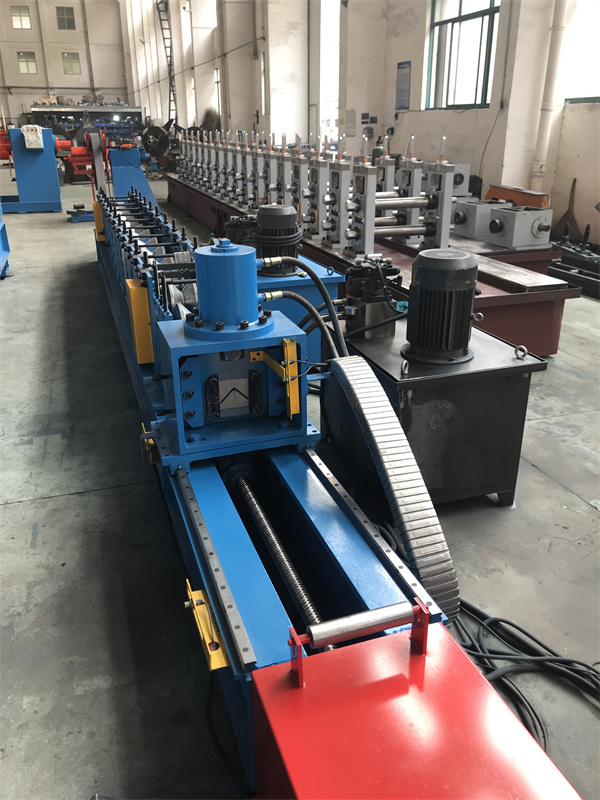

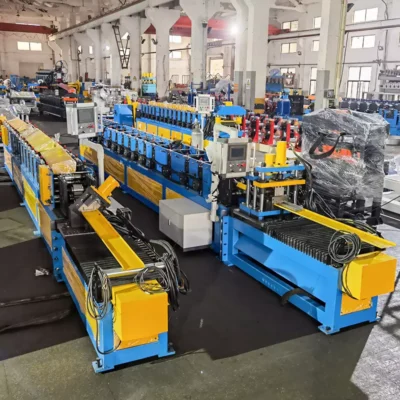
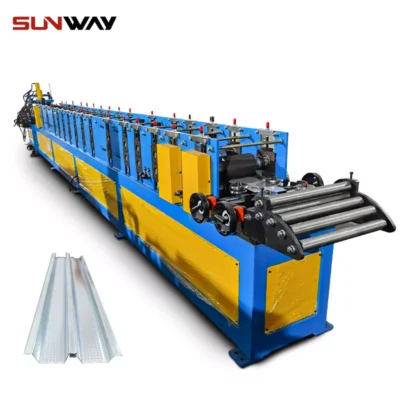
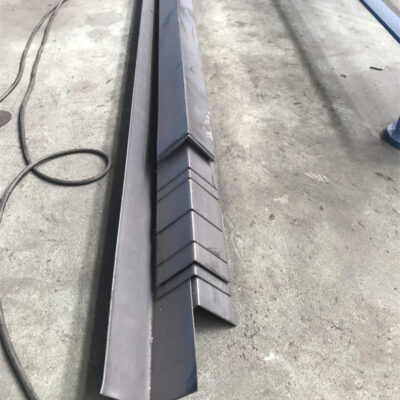
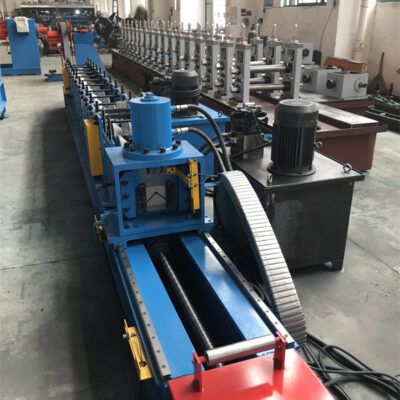
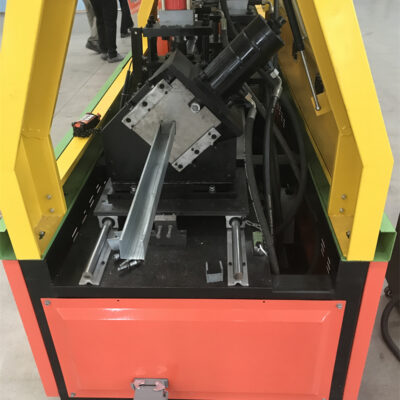
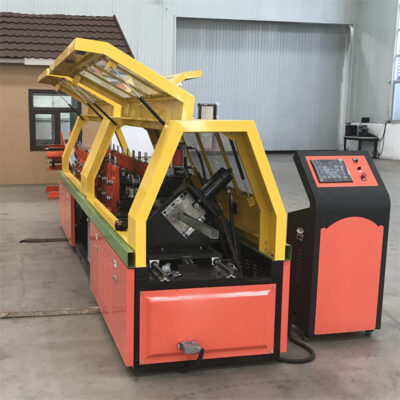
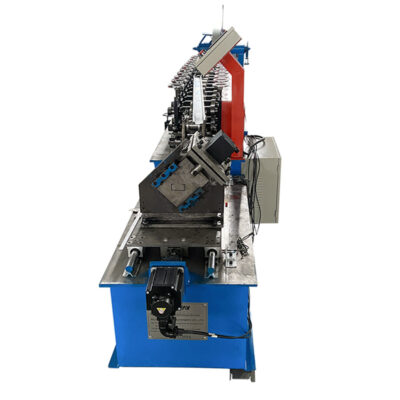
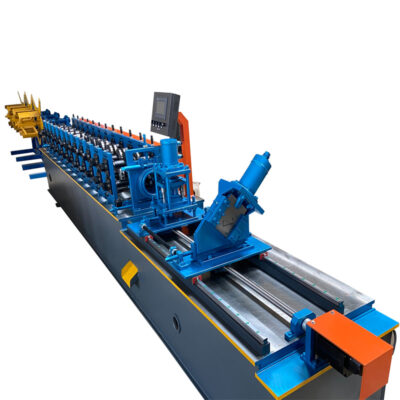
Reviews
There are no reviews yet.